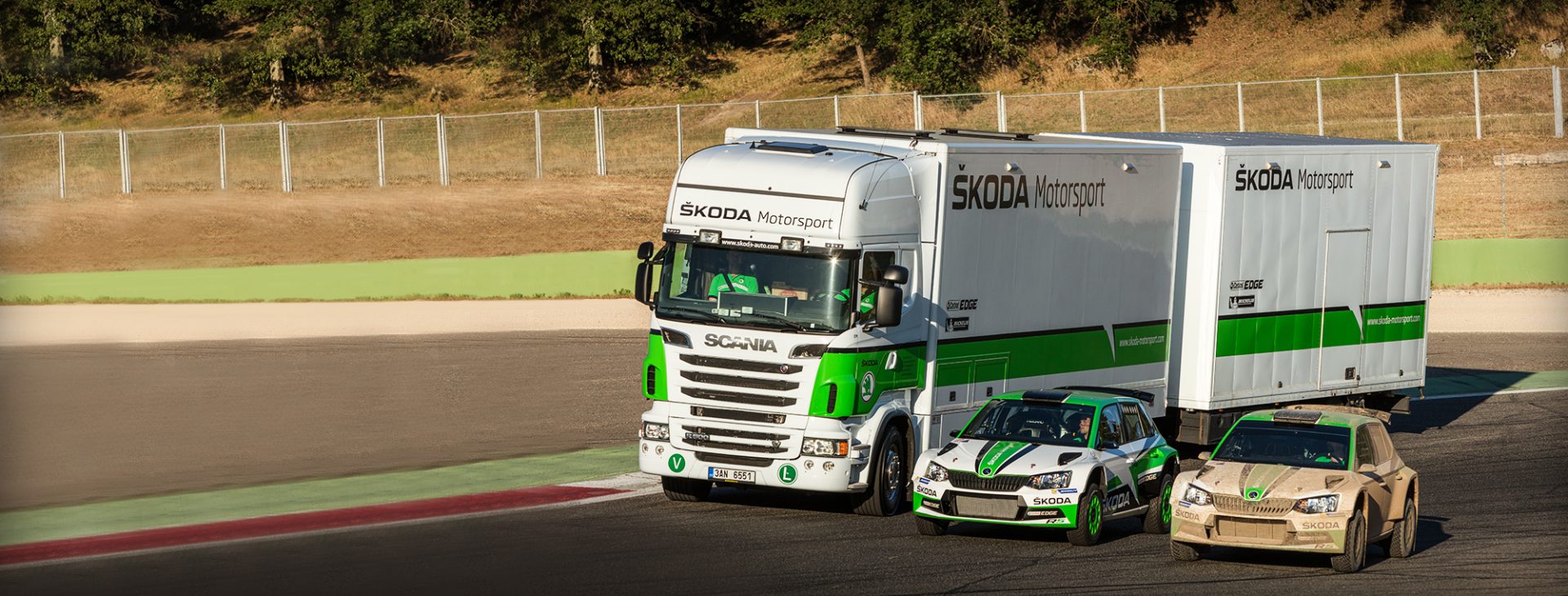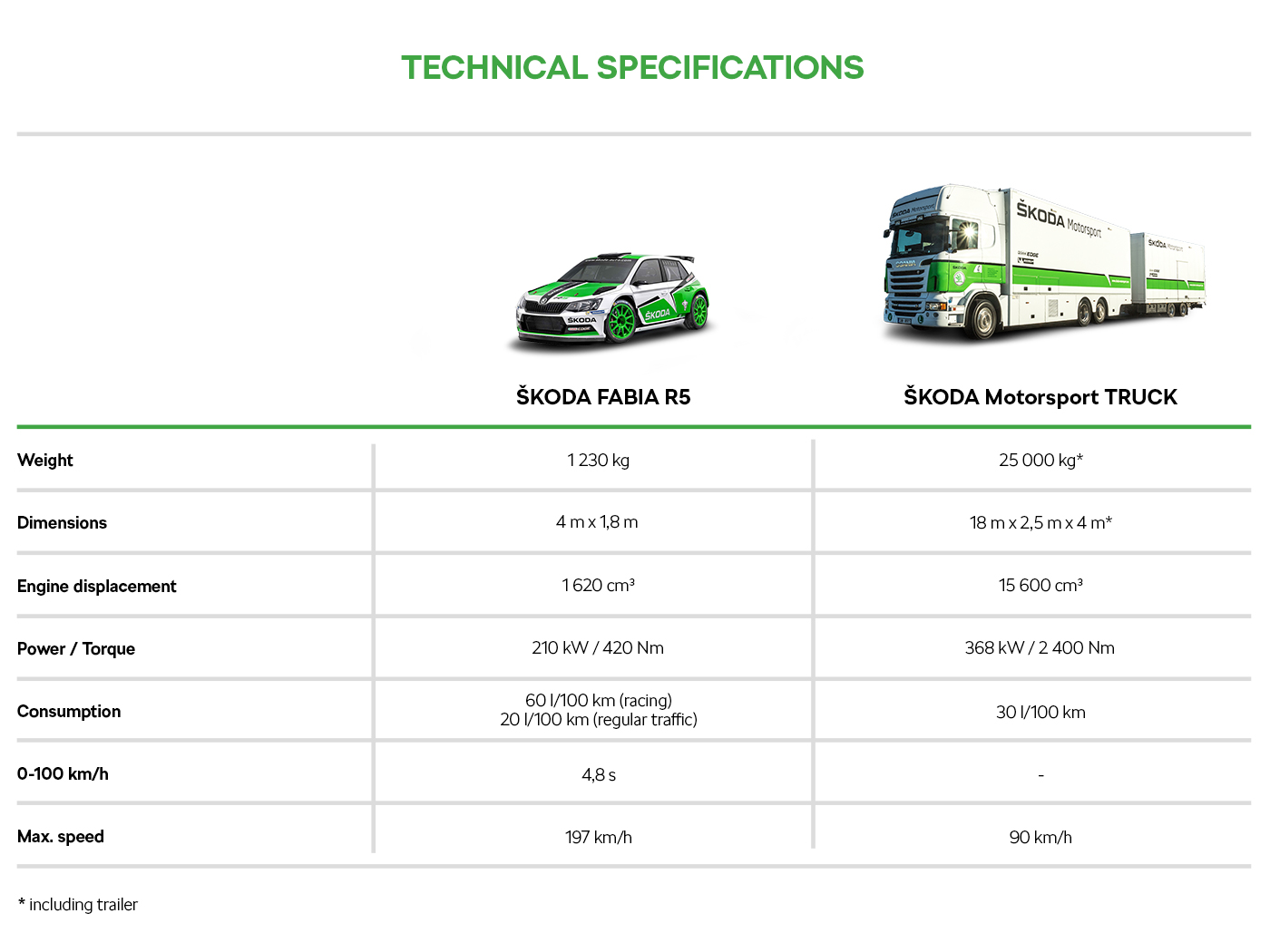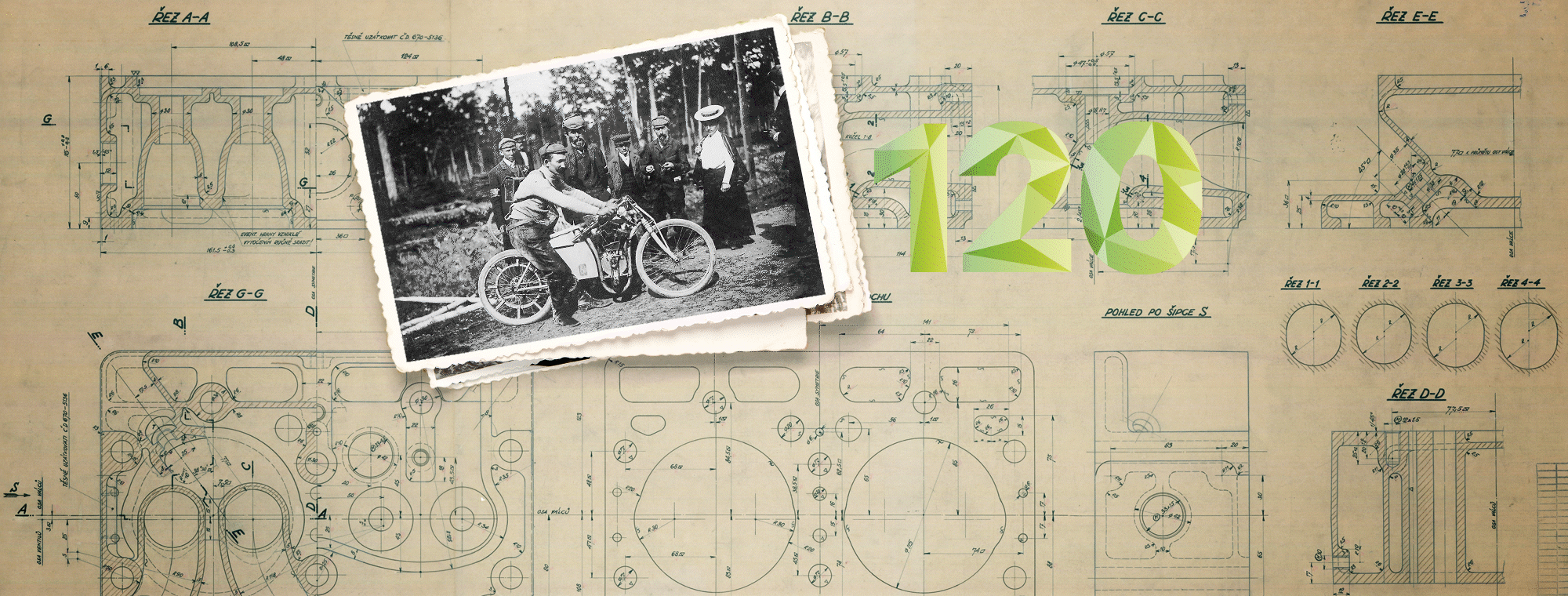If a damaged race car manages to make it back to the service zone, the truck team can deal with almost anything within half an hour. “As long as the protective frame isn’t damaged, we can get the car back into enough shape to continue the race and even win. We can replace the transmission, axles, differentials, wings, and we even carry two complete sets of spare doors in the truck. We also carry a roof, even though this is trickier to replace,” says Šlambora. A number of parts are also pre-assembled, because sometimes it’s easier to replace an entire unit than just a specific part. If there’s a problem with the steering, for instance, it’s faster to replace the entire axle housing at once.

An ample supply of front bumpers is stored at the top of the truck. They must be kept in perfect shape.
And why does the truck carry so much water for washing, when a car race isn’t a beauty pageant? To avoid chaos during a race, there has to be strict order and cleanliness. During a service stop, the race cars are always perfectly cleaned inside and out. This helps to detect any wear and tear in time, while increasing the comfort and concentration of the crew, to keep them from having to breathe in dust and to spare the co-driver’s vocal cords. The same strict rules apply to the service truck. “It’s our workplace, and it reflects on our level of professionalism,” says Šlambora.







































